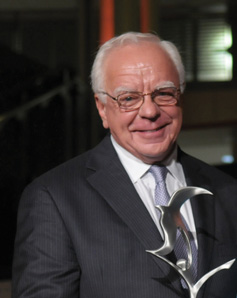This is “Case: Brewing a Better World: Sustainable Supply Chain Management at Green Mountain Coffee Roasters, Inc.”, chapter 9 from the book Sustainable Business Cases (v. 1.0). For details on it (including licensing), click here.
For more information on the source of this book, or why it is available for free, please see the project's home page. You can browse or download additional books there. To download a .zip file containing this book to use offline, simply click here.
Chapter 9 Case: Brewing a Better World: Sustainable Supply Chain Management at Green Mountain Coffee Roasters, Inc.
Introduction
Learning Objectives
- Describe how sustainable supply chain management can be a source of competitive advantage.
- Understand how one company conducts business in economically and socially disadvantaged regions of the world based on the values of its founder and senior management.
- Explain how success in business sustainability and success in overall business performance can be related.
Getting coffee to the supermarket or the local coffee shop involves many different supply channels and business decisions with significant economic, environmental, and social implications. Green Mountain Coffee Roasters, Inc. (GMCR) has informed coffee drinkers about the environmental and social impacts of their consumption and helped to change coffee consumption and industry practices.
Bob Stiller, Green Mountain’s founder and chairman, is a strong advocate that Green Mountain and all businesses can help make the world a better place by committing to sustainability values and practices. Acting with concern for sustainability in a highly competitive industry that had historically focused primarily on low cost has provided opportunities for GMCR. Green Mountain management has used achieving sustainability in its products and practices to their competitive advantageA superiority gained by an organization when it can provide the same value as its competitors but at a lower price or can charge higher prices by providing greater value through differentiation. Competitive advantage results from matching core competencies to the opportunities.. As the company founder declares, “Our success continues to be rooted in our inclusive business model of creating an exceptional beverage experience for customers and consumers, in a socially and environmentally responsible way, leading to sustainable financial success.”Green Mountain Coffee Roasters, Inc., Annual Report 2009, accessed April 16, 2010, http://www.gmcr.com/Investors/AnnualReport.aspx.

GMCR founder Bob Stiller.
Green Mountain Coffee Roasters, http://blog.greenmountaincoffee.com/blog/laura/save-the-chimps-drink-great-coffee.
The focus of this case is on how Green Mountain Coffee established a strong competitive position in the specialty coffee industry by using sustainable business practices. The company helped to transform the value propositionMix of goods and services and price and payment terms offered by a firm to its customers. in the coffee industry from low cost to shared value creation, meeting consumer consumption desires while addressing social and environmental impacts of the industry.
In 2010, GMCR was recognized as the largest purchaser of Fair Trade Certified coffee in the world, a reflection of the company’s commitment to high-quality coffee as well as social and environmental sustainability in coffee-farming communities globally. In its 2009 corporate social responsibility report, “Brewing a Better World,” the company noted, “All companies have sustainability challenges, a tension between where they are today and where they want to be with respect to sustainability issues—we’re no different in that respect. What we believe makes us different is how we address that challenge—by embracing it, by running towards it, and using that tension to drive us toward new solutions.”Green Mountain Coffee Roasters, Inc., Brewing a Better World: VOICES, accessed May 30, 2010, http://www.gmcr.com/PDF/gmcr_csr_2008.pdf.
Exercises
-
Take a friend for a cup of coffee at Starbucks, Dunkin’ Donuts, and one local coffee shop selling Green Mountain Coffee.
- What are the different types of coffee sold?
- At what selling prices?
- From what countries?
- What information is available to help educate customers about where the coffee comes from and how it is produced?
-
Go to YouTube and find videos on coffee growing around the world.
- How is coffee growing portrayed in the videos?
- What are your impressions of how coffee growing is portrayed in the videos?
-
Go to Green Mountain’s homepage at http://www.gmcr.com/ and download the 2009 corporate social responsibility report, “Brewing a Better World.”
- How does GMCR define sustainability?
- What notable sustainable business practices has GMCR undertaken for 2009?
- How does GMCR distinguish between sustainability and corporate social responsibility?




